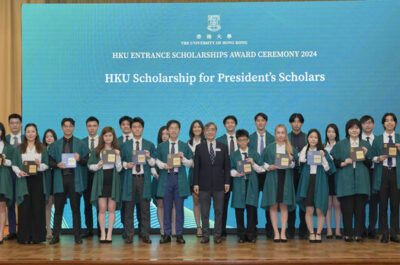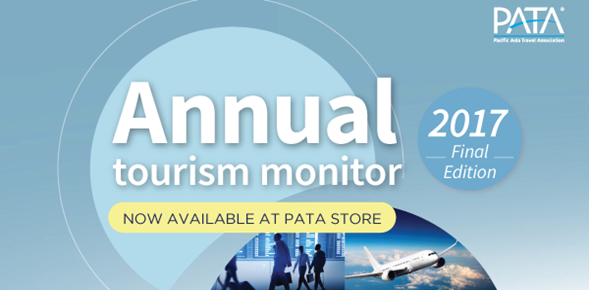The PATA Annual Tourism Monitor 2017 Final Edition reports in detail on the inbound visitor movements to 47 destinations across the Asia Pacific region for the period 2012 to 2016.
Despite a lower annual growth rate than the global average in 2016, the Asia Pacific region still received a record number of almost 600 million international visitor arrivals for the year, according to a report released by the Pacific Asia Travel Association (PATA).
Preliminary results: 2016
The PATA Annual Tourism Monitor 2017 Final Edition reports in detail on the inbound visitor movements to 47 destinations across the Asia Pacific region for the period 2012 to 2016, as well as covering several other important and pertinent metrics including (where available), resident departures, visitor average length of stay and visitor expenditure.
Annual growth rates varied widely across Asia Pacific destination regions between 2015 and 2016, ranging from a high of 7.4 percent for the Pacific, to 3.8 percent for the Americas and 2.3 percent for Asia, averaging out at 2.9 percent for Asia Pacific as a whole.

From a volume perspective however, the strongest destination region in 2016 was Asia with a 72 percent relative share of foreign arrivals into Asia Pacific, followed by the Americas (24 percent) and the Pacific (4%).
This ranking sequence held true for the incremental increases in absolute arrival numbers between 2015 and 2016 with Asia showing the strongest increase of almost 10 million foreign arrivals, followed next by the Americas with an annual increase of almost 5.4 million and then the Pacific with an incremental annual increase of almost 1.7 million in absolute numbers.
Across the Americas, South America registered the highest annual growth rate of 17.6 percent in 2016, followed by Central America with 9.1 percent and North America with a 0.4 percent gain. Collectively, the Americas received 146.7 million foreign arrivals in 2016, with North America alone accounting for 95.6 million of those arrivals.
Within Asia, South Asia had the strongest annual growth rate between 2015 and 2016 at 11.2 percent. Southeast Asia followed with 8.6 percent growth, then Northeast Asia with 3.7 percent and finally West Asia with a rare contraction of 24.6 percent. Northeast Asia remained the dominant destination sub-region within Asia in 2016 receiving 277.4 million foreign arrivals, followed by Southeast Asia with 114 million. Asia in total received 435.8 million foreign arrivals in 2016.
Oceania reported the strongest annual growth rate within the Pacific during 2016 at 11.2 percent and was also the dominant sub-region by volume of arrivals receiving 11.8 million of the 24.5 million into the Pacific in that year. Micronesia was the next strongest destination sub-region by annual growth rate with a 7.1 percent increase followed by Melanesia with 4.1 percent and finally Polynesia with a 3.4 percent annual growth rate.

Among the 47 destinations covered in this PATA report, all but six reported annual percentage increases in visitor arrivals with the most prominent being:
Nepal: +39.7 percent
Korea (ROK): +30.9 percent
Chile: +27.1 percent
By incremental volume increase between 2015 and 2016, the strongest performing destinations were:
Japan: +4.3 million
Korea (ROK): +4.0 million
China: +3.8 million
At the individual origin-destination level there were even more significant growth increases between 2015 and 2016, as evidenced by three of the strongest:
Haiti into Chile: +258.0 percent
Argentina into French Polynesia: +162.4 percent
Chinese Taipei into Lao PDR: +128.4 percent
By incremental volume increases between 2015 and 2016, the top three origin-destination pairs were:
Hong Kong SAR into China: +3.2 million
China into Korea (ROK): +2.1 million
China into Japan: +1.5 million
The dominance of the intra-regional flows within Northeast Asia is very evident. Excluding the Northeast Asia pairs gives another perspective on some strong incremental volume increases as well, with the top origin-pairs now becoming:
USA into Canada: +1.4 million
USA into Mexico: +1.0 million
Argentina into Chile: +0.954 million
PATA CEO Dr. Mario Hardy said, “Intra-regional flows of international visitors continue to be the backbone of foreign tourism for most of the Asia Pacific sub-regions and this is likely to continue over the medium term. In an uncertain world, international travel will not necessarily stop but rather be diverted to destinations that are better known and often closer to home.
“This is a trend that PATA has been monitoring for some time and one that we will continue to track carefully in order to offer data-driven support for the efficient marketing resource allocation of our members and the industry at large”, he added.
Early results: 2017

Within Asia Pacific, some 34 destinations have released preliminary data for 2017 and collectively these show that the growth momentum of recent years has continued with a year to date jump from an annual growth rate of 3.4 percent in the 2016 period to 5.6 percent in the 2017 period. This is the strongest year to date performance over the last five years, since 2013 and 2014.
Once again the Pacific is leading the way in period to period growth with an annual gain of 6.4 percent in early 2017, followed by Asia with a 5.9 percent increase over the same period and the Americas with a four percent increase period to period.
Overall, the incremental increase in foreign arrivals into Asia Pacific has been close to 12 million relative to the same period of 2016.
Of the 34 destinations covered, 13 have double-digit period to period increases between 2016 and 2017, led by the Northern Marianas with a 37.4 percent increase, followed by Vietnam with a 31.9 percent gain and Vanuatu with a 28.9 percent increase.
By incremental growth in absolute numbers five destinations, namely Japan, China, Mexico, Turkey and Vietnam, have increases in excess of 1.5 million each period to period between 2016 and 2017. It is significant also that Turkey, with an incremental gain of more than 1.5 million foreign arrivals and a 14 percent period to period growth rate appears to be on the rebound after taking a severe drop in foreign arrivals in calendar year 2016.
At the other end of that volume increase spectrum however, are very strong reductions in foreign arrivals into for example, the Republic of Korea (-1.4 million) and the USA (-0.7 million). In total only six of the 34 destinations covered have reported early 2017 decreases in their respective foreign inbound counts.
A number of origin markets are showing strong growth into specific destinations, particularly the following with period to period volume gains between 2016 and 2017:
Russian Federation into Turkey: +1.5 million
Hong Kong SAR into China: +1.3 million
Korea (ROK) into Japan: +0.8 million

The Russian Federation, which saw a slowing of arrivals into Asia Pacific in recent years, is also showing strong incremental volume increases into a number of destinations which, apart from Turkey, include Thailand with a net gain of 170,000 so far this year and Indonesia with an increase of 22,000 over the same period.
“The occasional volatile nature of tourism is evident in the way some destinations expand and sometimes contract their respective foreign inbound counts. So too is the speed with which tourism rebounds, as evidenced by the early strong growth into Turkey and the re-emergence of the Russian traveller into the Asia Pacific region in 2017. Even as the numbers of international visitors grow we must remain mindful of the interconnected issues of sustainability as part and parcel of that growth and embrace the UN Sustainable Development Goals when pursuing our mandate for the responsible and sustainable development of tourism.” said PATA CEO Dr. Mario Hardy.
Angelos is the news editor for TravelDailyNews Media Network (traveldailynews.gr, traveldailynews.com and traveldailynews.asia). His role includes to monitor the hundrends of news sources of TravelDailyNews Media Network and skim the most important according to our strategy. He currently studies Communication, Media & Culture in Panteion University of Political & Social Studies of Athens.




![[PR] PR_Ascott and Vimut Hospital_2024](https://www.traveldailynews.asia/wp-content/uploads/2024/04/PR-PR_Ascott-and-Vimut-Hospital_2024-400x265.jpg)



























































